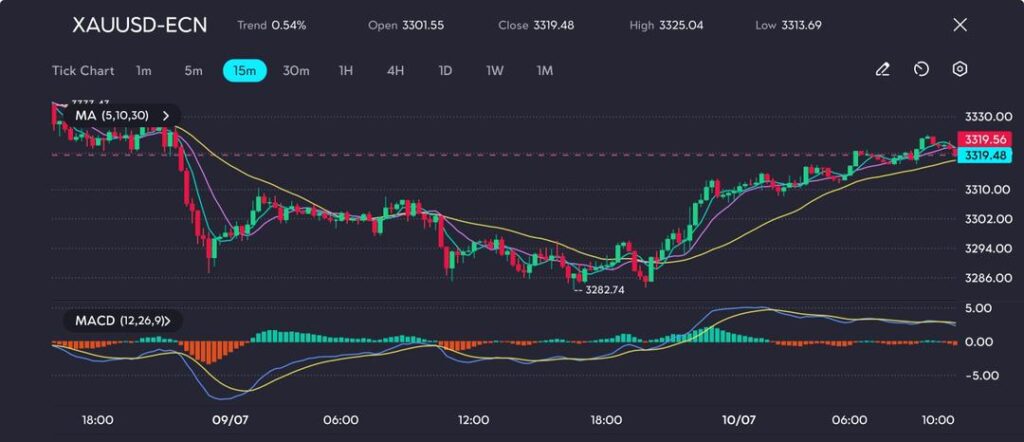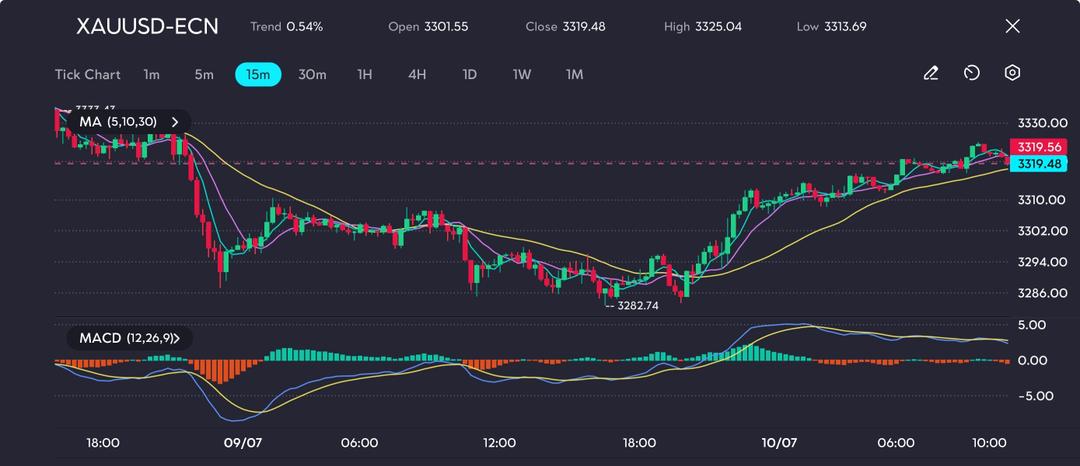Gold prices nudged higher on Thursday, supported by a slight dip in the US dollar and Treasury yields. However, gains were restrained as markets showed signs of fatigue towards President Trump’s increasingly aggressive trade measures.
Spot gold climbed 0.3% to $3,322.46, while US gold futures rose to $3,331, marking a cautious recovery from the week’s low of $3,282.74. Despite the swirl of geopolitical developments, momentum remained modest, reflecting a cautious investor mood.
Louder Tariff Rhetoric, But Diminishing Impact
President Donald Trump escalated his global trade offensive, announcing fresh 50% tariffs on US copper imports and new duties on goods from Brazil, set to take effect on 1 August. A further seven countries were added to the list on Thursday, expanding the tariff target group to 21 nations, including South Korea and Japan.
Yet financial markets barely reacted. Analysts pointed to a growing sense of ‘tariff fatigue’, where traders have become desensitised to the near-constant barrage of protectionist announcements.
Technical Analysis
Gold has mounted a modest rebound, ending the day at 3,319.48, an intraday gain of 0.54%. Price action indicates a steady recovery from the day’s low of 3,282.74, with bullish pressure gradually building, evidenced by a series of higher lows and highs. The 5-, 10-, and 30-period moving averages have now formed a bullish crossover structure, signalling short-term upward potential.

The MACD has moved above the neutral line and remains in positive territory. However, flattening histogram bars hint at slowing momentum as the price nears a potential resistance zone between 3,325 and 3,330, a region that previously acted as support before turning into resistance.
FOMC Minutes Provide Little Inspiration
The minutes from Wednesday’s Federal Reserve meeting offered few surprises. Only ‘a couple’ of members showed support for a rate cut as early as July, while the majority preferred to hold steady for now, citing inflation concerns linked to trade tariffs. The next Federal Open Market Committee (FOMC) meeting is scheduled for 29–30 July and could present the next significant trigger for gold.
Until then, gold prices are likely to remain range-bound, driven more by technical indicators and near-term softness in the dollar than by fresh concern over the escalating trade front.
Create your live VT Markets account and start trading now.




